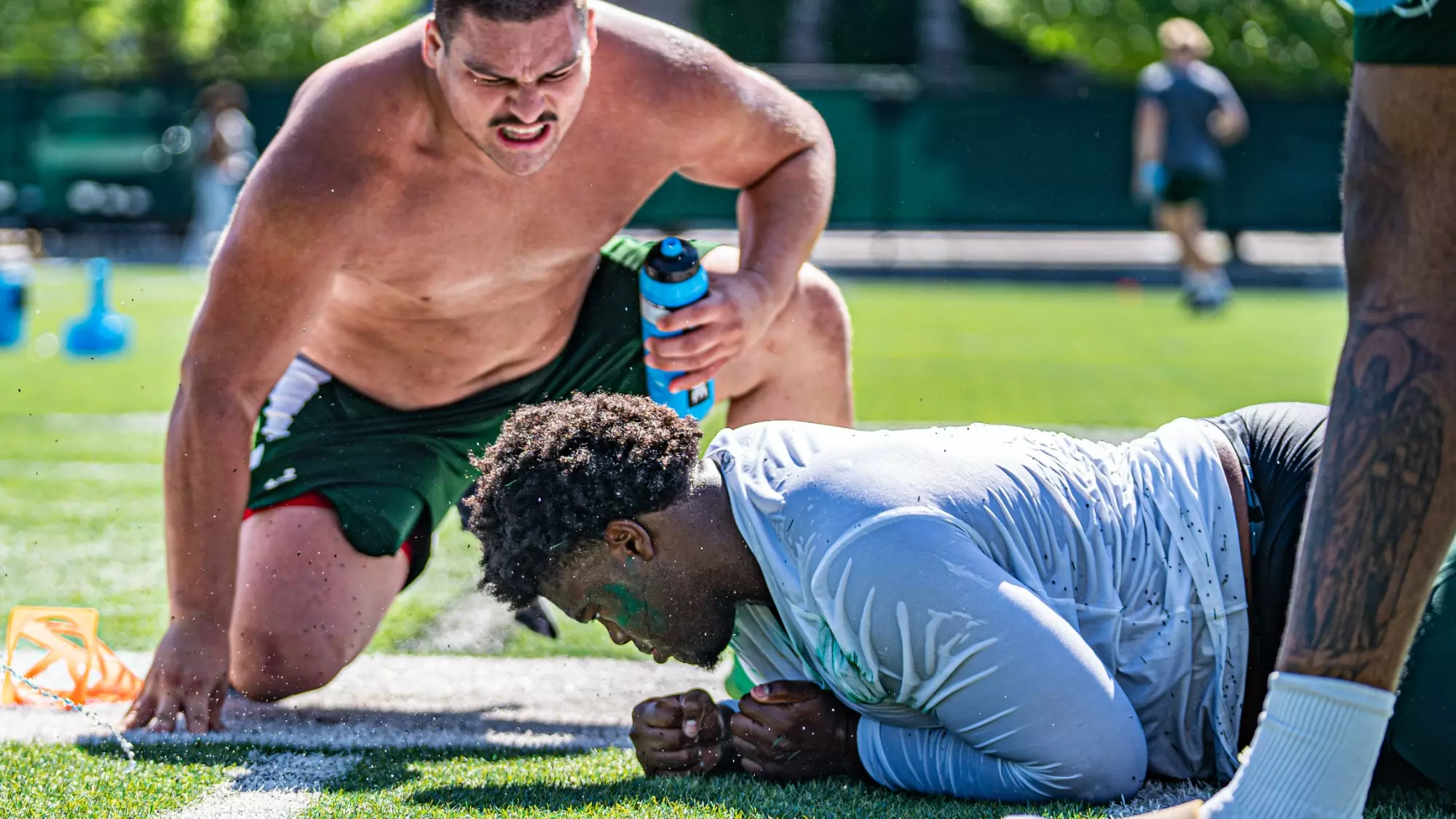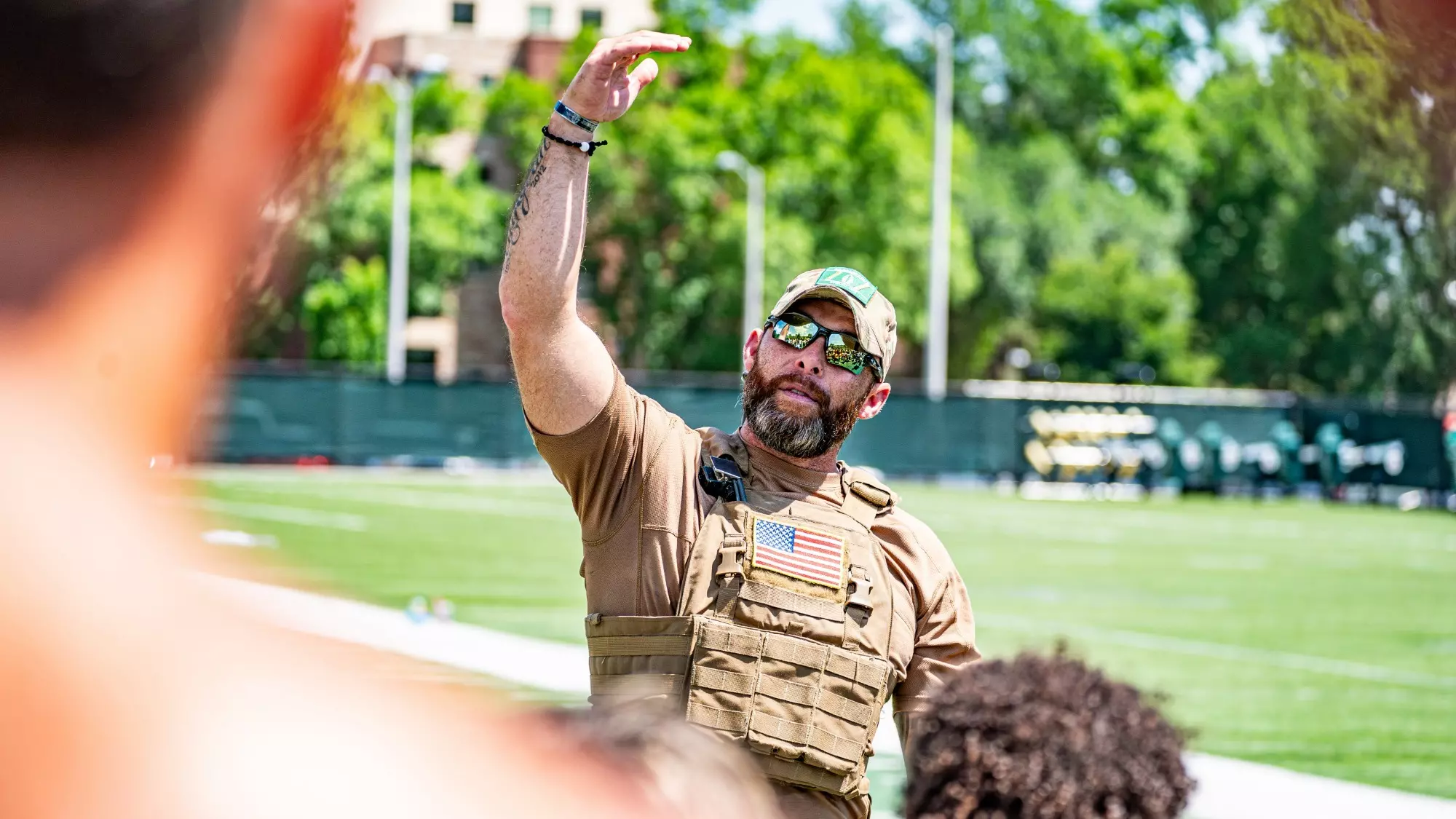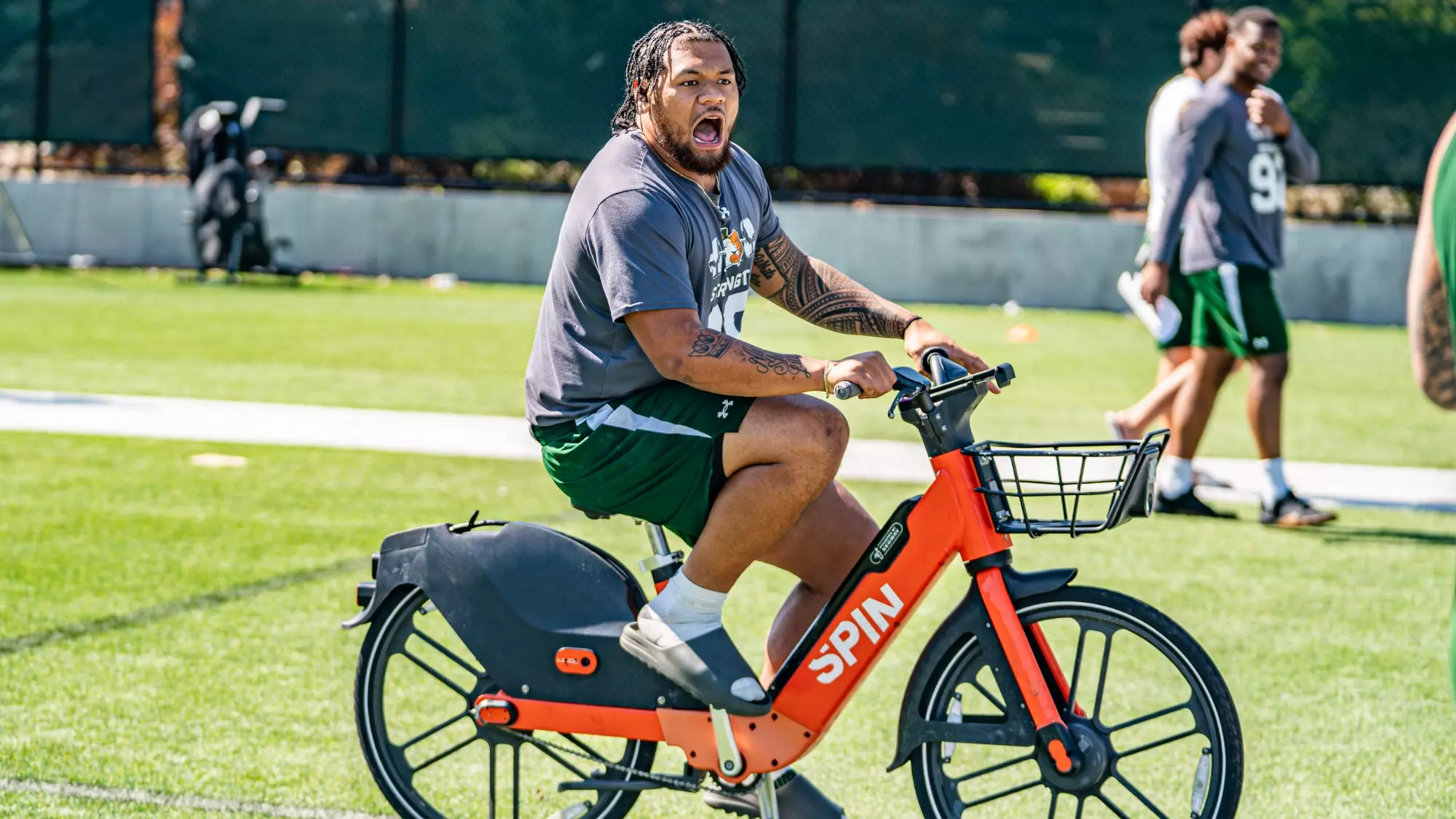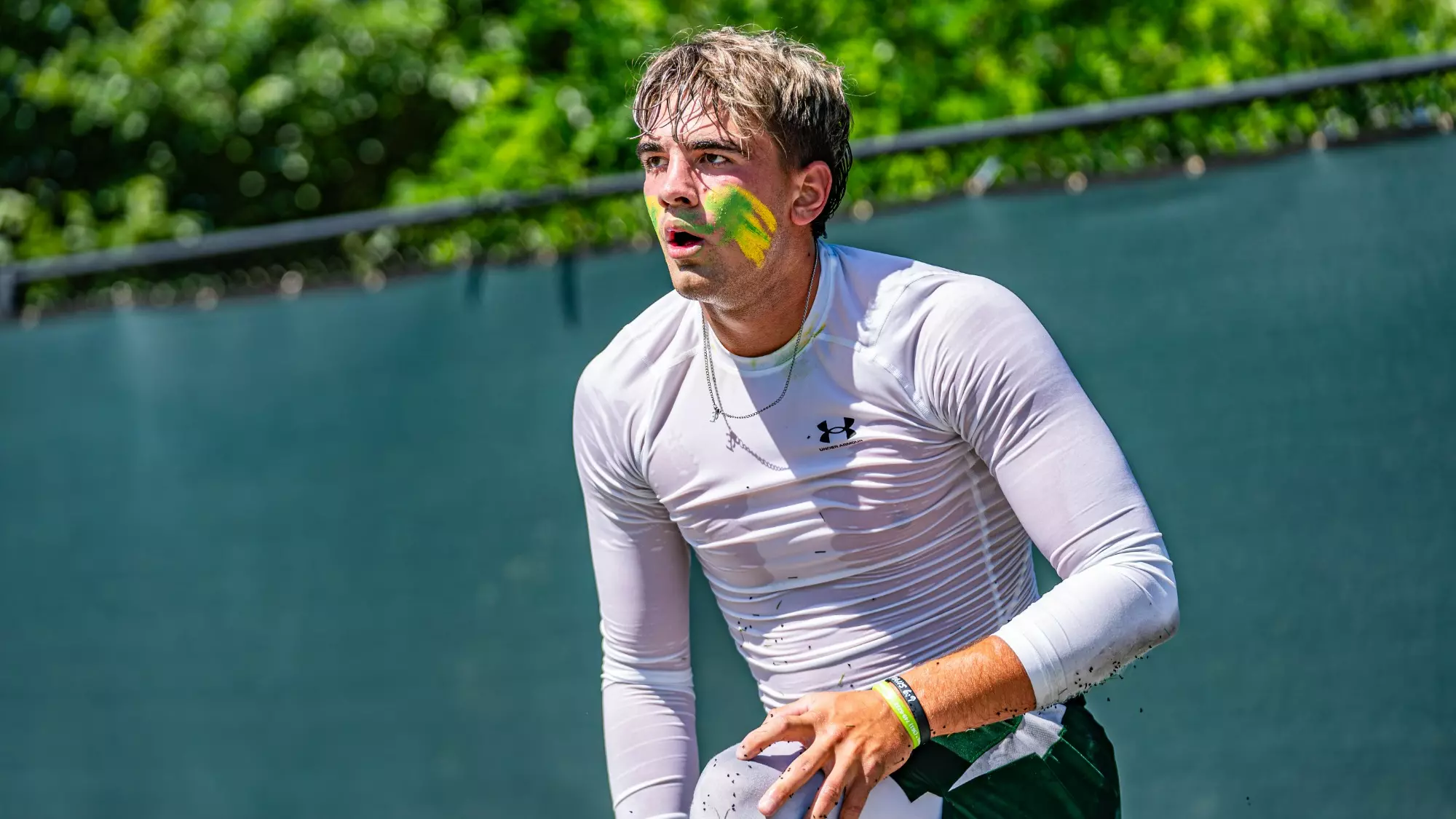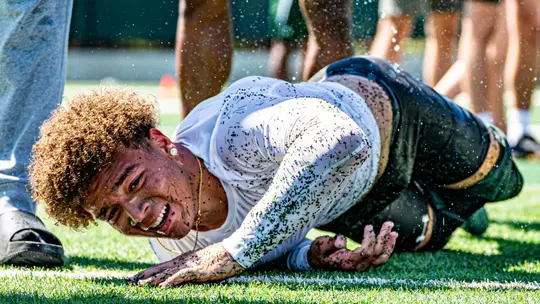
Building a Culture Through a Shared Experience
Duskin workout has become bedrock of Colorado State football
Mike Brohard
There is nothing subliminal in the messaging. The workout is likely to be the worst thing the players will ever experience physically, the statement made without a hint of hyperbole.
The Duskin drill will take them to dark places where they want to quit. They will not. Because, while they are on their own navigating a host of physically exerting tasks one after the next under the late June sun, your teammates will not let you.
You must go forth on your own, but you will not be alone.
“Absolutely. I had a lot of guys supporting me – Christan Martin, Aaron Karas. Those guys were the reason I was able to push through and finish the workout,” Philip Ocon said recalling his first experience. “It’s really important to get the young guys juiced up and going.
“Don’t quit. We’re a room built on people with grit. We don’t quit around here. This workout is going to be hard, it’s going to suck and you’re going to want to quit but you can’t. You can’t do that. That’s what we instill in all of our guys.”
Honestly, Jordon Simmons, the assistant head coach at Colorado State and the head strength and speed coach, says the players should be thankful. The Duskin drill is named after highly decorated Warrant Officer Two Michael Duskin, originated for special forces training through the foundation created in Duskin’s name after he was lost in battle. It is there where Simmons and director of player development Jeremy Copeland crossed paths.
Copeland knew Duskin in passing meetings but knew him best through the way his peers spoke of him and revered the man he was. Watching the precise workout, Simmons wondered if any human could survive the training and was amazed when they did.
But mostly the why, which is why the scaled-down version was ideal in his mind for a football team.
“I thought about how they interacted with each other and this one stood out to me. If you think this is hard, this is nothing compared to the actual workout,” Simmons said. “I just remembered the guys picking each other up and encouraging each other to get through it, and I’m watching like, ‘you have to be kidding.’ They got through it, and it was because some guys who finished came back around and encouraged the ones still going. I thought, that’s a brotherhood.”
The drill is conducted twice a year, but the players only go through it once. The winter session is the hardest in Simmons’ mind because those on the roster all do it together. In the winter, the players have to encourage themselves at the same time they are working through their own pain. At the end of last week, it was only the players – mainly freshmen and new transfers – who did it, with the returners by their side barking each and every step.
No player was left to his own devices. Each one of them was surrounded by a pack, telling them they had more in the tank, selling them on the final product which they could not yet see. Kenyon Agurs sang to some from a song he had playing on his phone. Others chose a traditional motivation – playing the theme from ‘Rocky’ for the players to push them through the later rounds.
Jernias Tafia had the most unique approach, renting one of the mechanical bikes to ride around the turn shouting out praise to all within earshot.
I think it was a lot worse than I thought it was going to be, but at the end of the day, I’m glad I did it. It’s a really good experience. It’s good to know the meaning behind it.Cannon Valenzuela
At most of the stations, one could see the looks of dread – when players went dark. They were most intense during either the bear crawls or the army crawls – when players could use only their arms to move their sprawled out bodies across the practice turf. If the 80-plus degree temperatures weren’t bad enough, the additional heat rising off the field made it worse. And the shredded rubber balls sticking to their bodies didn’t provide relief.
Before each session of the Duskin, Copeland stands before the team in a pared down version of his Army Special Forces kit and tells the players stories about the man for whom the workout is named and what they are about to face and why.
That shared pain and suffering ties together men like nothing else. And when you go dark – and he tells them they will – he reminds them the reward will be something earned, not given. What is a miserable experience in the moment is replaced by an irreplaceable feeling of accomplishment at the end.
“It’s to bond them together. That’s why the guys who have already done it are so energetic with them,” Copeland said. “They’re not pulling any punches. It means something to them, and they know when these guys get done with it, it will mean something to them as well.”
Watching freshman Cannon Valenzuela go through army crawls, it was clear he had gone dark. The eyes were emotionless, the expression blank. In that moment, he was cooked.
But just for the moment. Owen Long stood over him and implored him to keep going. Others sprayed him with water. There was no taunting, no threats, rather encouragement abound to find something within him he didn’t know he had.
Which he did. As he admitted, a task he required multiple times over.
“Once you go dark, you’re all for it. It happened to me at least two or three times,” the linebacker out of Jacksboro, Texas, said. “After the first lap I went dark and then went all out on the second lap. Those last two laps, you know it’s almost done, and you can see the finish line. You just have to go get it.
“I think it was a lot worse than I thought it was going to be, but at the end of the day, I’m glad I did it. It’s a really good experience. It’s good to know the meaning behind it.”
The drill has come to mean everything to the team. As Tanner Morley rooted on those in the process, he said he’s become a bit superstitious about the drill. It has to be done by everyone at least once during the year, which was why returner Aitor Urionabarrenechea was in the mix.
During the winter, he had a wedding to attend and thus could not take part. When the team suggested he had to take his turn, he didn’t fight the suggestion in the slightest.
“I’m glad he’s doing it. There’s no easy way,” Ocon said, who was by his side most of the day. “You have to do it. That’s all there is. Him doing this tells me he’s a grown man. He’s here to play football and he’s not a quitter. He’s a Colorado State football player, is what he is.”
In the nine years Simmons has incorporated the drill between the Rams and Nevada, only one person has finished in less than 44 minutes. It is an arduous test of endurance, strength and personal fortitude.
The reason he’ll continue to do it is what he sees as it unfolds. The camaraderie and team building are ideal to create the culture they want surrounding the program. On the whiteboard in his office, culture is basically defined as the worst thing a team will tolerate.
On Duskin day, the theory is tested.
“Coming in as a freshman, getting picked up by all the older guys builds a lot of confidence, knowing they believe in you as much as you believe in them,” Valenzuela said. “I’d say the worst part is the bear crawls and the army crawls. It’s not fun at all.
“I never thought I would do something this hard. But I got it done, and now I know how hard I can push myself.”
A message which became very real to him in the moment, particularly at the end as his feeing of accomplishment was bathed in sweat.
Support Colorado State Athletics: Tickets | Ram Club | Green And Gold Guard

